
We kindly inform you that, as long as the subject affiliation of our 300.000+ articles is in progress, you might get unsufficient or no results on your third level or second level search. In this case, please broaden your search criteria.

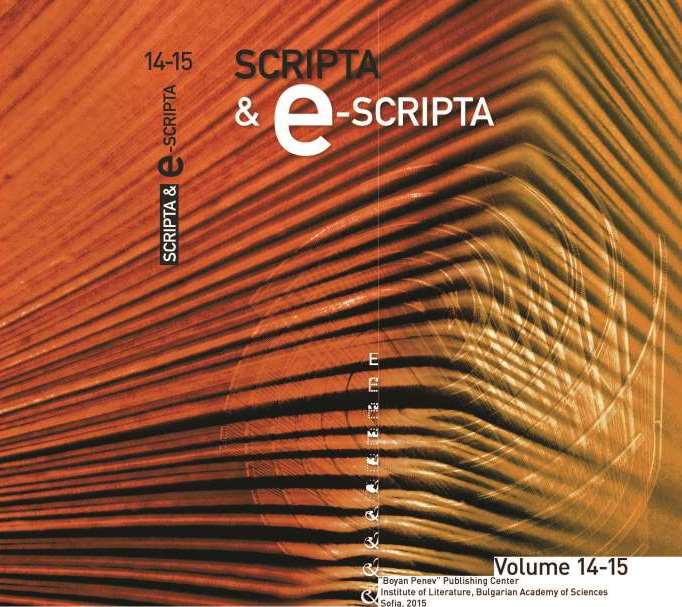
The author of the article describes the features of diachronic corpuses, created on the base of medieval Slavic codices. Their specificity in terms of compliance and transcription of the original objects is presented and the ratio of the markup standards and characteristics of Old Church Slavonic texts, specialized forms for searching and for displaying samples as well. The formation of a new applied section in medieval studies: corpus palaeoslavitic with computer tools is argumented and defined.
More...
The paper argues that the debate with John Grammaticus in the fifth chapter of the Vita Constantini was a historical event. It is placed in the narrative immediately before Constantine’s participation in the mission to the Saracens, which is identified with that which took place in 855/856: this requires the emendation of a single character in the Vita, giving Constantine’s age as 29, not 24. (This also means that he could have been appointed chartophylax, and deacon, at 25.) It is suggested that the debate took place at the very end of 855, when it would have been relevant to political circumstances.
More...
The present article provides a critical edition of some of the scholia interpolated in the 14th-century South Slavonic translation of Basil of Caesarea’s Homiliae in Hexaemeron (CPG 2835), viz. six fragments from Gregory of Nyssa’s Apologia in Hexaemeron. These fragments correspond to marginalia in a number of Greek text witnesses from the 10th and 11th centuries. The Slavonic evidence is analysed in the light of the Greek manuscript tradition, viz. on the basis of the Apologia edition of H. R. Drobner (2009) and a collation of the Greek manuscripts Codex Florentinus Laurentianus gr. IV.27 (A3) and Codex Oxoniensis Bodleianus Baroccianus gr. 228 (E6).
More...
The aim of this article is to provide a basis for evaluation of the place of a new Greek witness in the manuscript tradition of a major source for the history of Byzantine Law – the Synopsis Basilicorum major. The author describes exhaustively the main texts and scholia in cod. Kiev, National Library of Ukraine, Φ. I № 137/2. His new comprehensive description supplements and corrects the one published in a recent catalogue by Ievhen Chernukhin.
More...
This paper examines correspondences between unusual saints’ commemorations in the 9th-century Latin Neapolitan Wall Calendar and medieval Slavic calendars of saints, focusing on the menology to the Bulgarian Apostolus No. 882, the Zograph Trephologion (Draganov Menaion) and Palauzov Menaion, and the menology to the Ohrid Apostol. The analysis is based on data from Archimandrite Sergij’s collation of Slavic and Greek calendars of saints, and from the author’s electronic menology collation, for which Professor David J. Birnbaum developed the digital blueprint.
More...
This paper contains the first publication of printed excerpts related to Bulgarian history from two historical compilations by Paulinus of Venice. Chronologia Magna sive Compendium is presented according to lat. 4939, National library, Paris (14th c.) and Satyrica historia – according to Ms 445, Jagiellonian library, Cracow (15th c.). As the study and analysis of these manuscripts demonstrate, the compendia contain many accounts related to Bulgarian history – from the formation of the Bulgarian state in 681 up to the dynastic marriage of the Latin emperor of Constantinople Henry in 1213. All of the motifs from Bulgarian history, which Paulinus selected and included, are significant and fully aligned with the aims, which he had set himself in the prologue to Satyrica historia. These motifs are not merely a compilation of successes and failures, but are to form a body of well researched information, which will serve to edify posterity, based on the historical experience of the Roman and other kingdoms. Interpreting the evidence in Paulinus’ accounts in light of his stated approach, it appears that after their appearance on the European stage (681) the Bulgarians played the role of the defenders of Christian Europe (717) and the armament of God (811 г., 1205 г.). Their joining the Christian family of the European people is also recounted (865) through the example of the determination and beatitude of the Bulgarian ruler who defended the new faith even against his own son. Additionally, the Bulgarians are described as participants in events related to Byzantine history (705), as well as being adversely affected by the expansion of the unconverted Hungarians (907, 970, 1003). The accounts related by Paulinus are re-workings of earlier sources he was apparently well acquainted with. It can be argued that the present publication identified those sources with significant accuracy. The mistakes in the dating that occur in Paulinus’ compilations are often attributable to him connecting events to significant historical episodes or historical personalities, around which he builds a whole chapter or rubric of the narration. Sometimes the anachronisms are due to the sources he used. The study of the context, in which motifs related to Bulgarian history are placed allowed me to identify the sources of the material and the method of compilation employed by Paulinus of Venice. Last but not least, the analysis of the content of the motifs allowed me to establish that Dandolo mainly used information from Historia satyrica, but perhaps also consulted with Chronologia magna. He included in his chronicle almost all the motifs from the works of Paulinus, with the exception of the chronological note on the death of Nicephorus I Genik and the episode on Walter Senzavohir. Thus, the publication of the fragments from Historia satyrica and Chronologia magna clarified the origin of those passages in the chronicle of Andrea Dandolo about which D. Angelov wrote that they are connected to earlier historiographical sources but their origins are in need of further investigation.
More...
The publication opens for discussion an approach to macrostructural analysis of certain calendar miscellanies with selected readings which belong to the Medieval Balkan tradition. The author proposes that the selection of feasts and saints’ commemorations, as well as the order of the corresponding texts might be interpreted as determined by certain overall theme(s) / thematic fields and could be „read“ on the level of the book’s content. This approach was encouraged by the outcomes of a study on the calendar-thematic composition of Damaskenos Studites’s Thesauros and its transformations in Bulgarian literary tradition in the 16th-18th century. Aiming at a search for similar preceding models, the survey makes comparison on macro-compositional level between some panegyrica, such as Mihanović Homiliar and Jagić Zlatoust of the late 13th – early 14th century, the 1358/59 Miscellany of German, and the 16th-century Panegyricon No. 85 from the Bulgarian Academy of Sciences. In addition, the study explores the relevancy of a method for visualisation, which can be supportive of a thematic analysis.
More...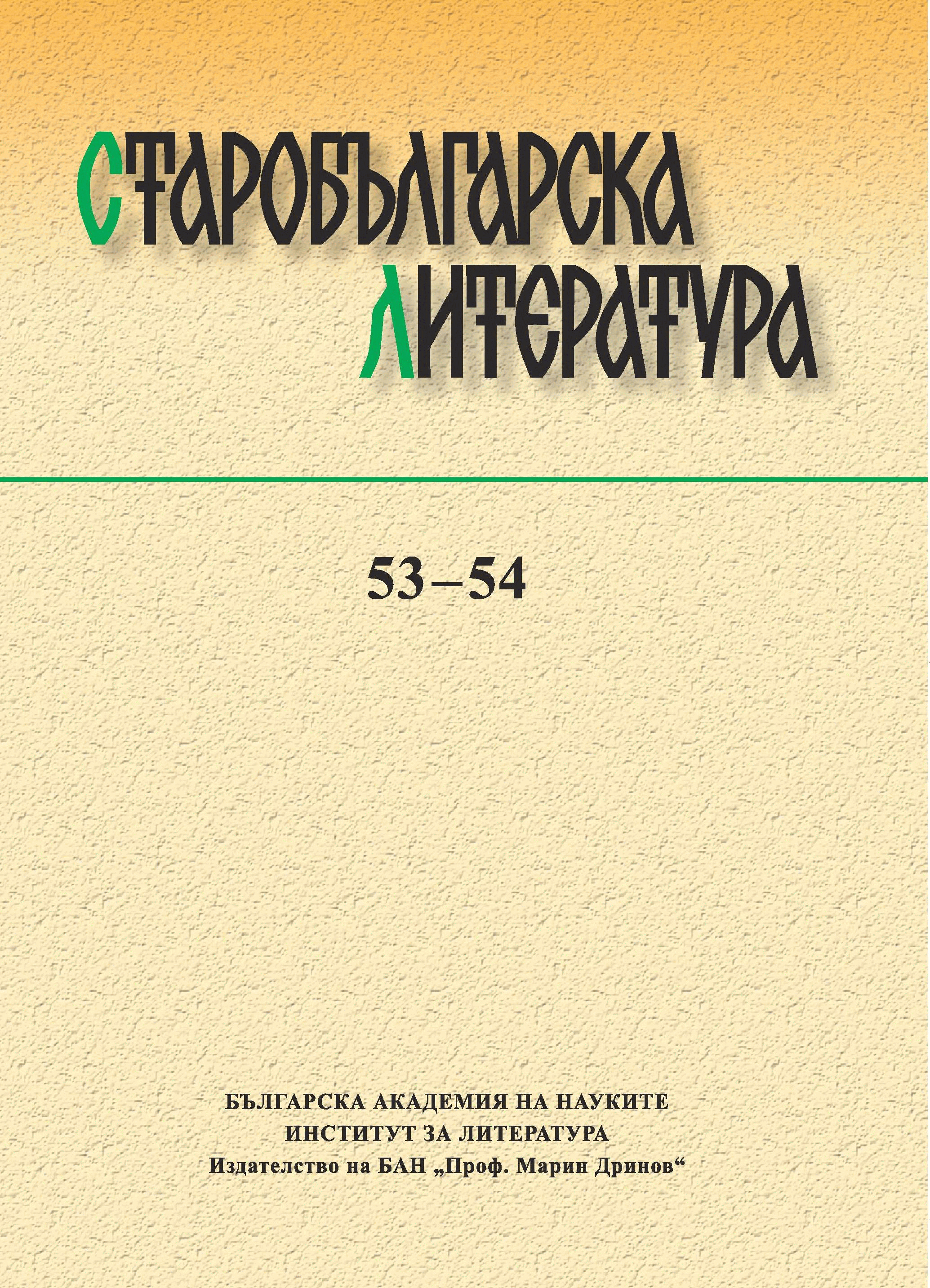


Church Slavonic manuscript collections in Poland hold over forty copies of homilies and encomia traditionally attributed to Clement of Ohrid. Although scholars have known about these copies for years, they have not been subjected yet to detailed linguistic and textual studies. The analysis of the works from the Lenten and Paschal cycles reveals that part of the copies retain old linguistic features – spelling and lexical units – from South Slavonic manuscripts which, no doubt, were still in use in areas of Western Russia during the 14th–16th centuries. As a rule, Clement’s works were faithfully copied, but there are occasionally examples of textual interventions that evince editorial activity by local scribes and compilers. The source material confirms the opinion that, within the Polish-Lithuanian state, Russian Orthodoxy was actively drawing from the South Slavonic literary tradition.
More...

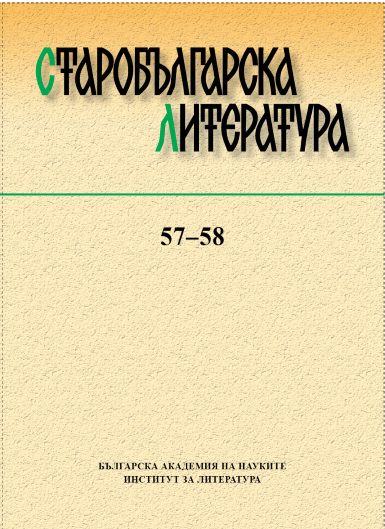
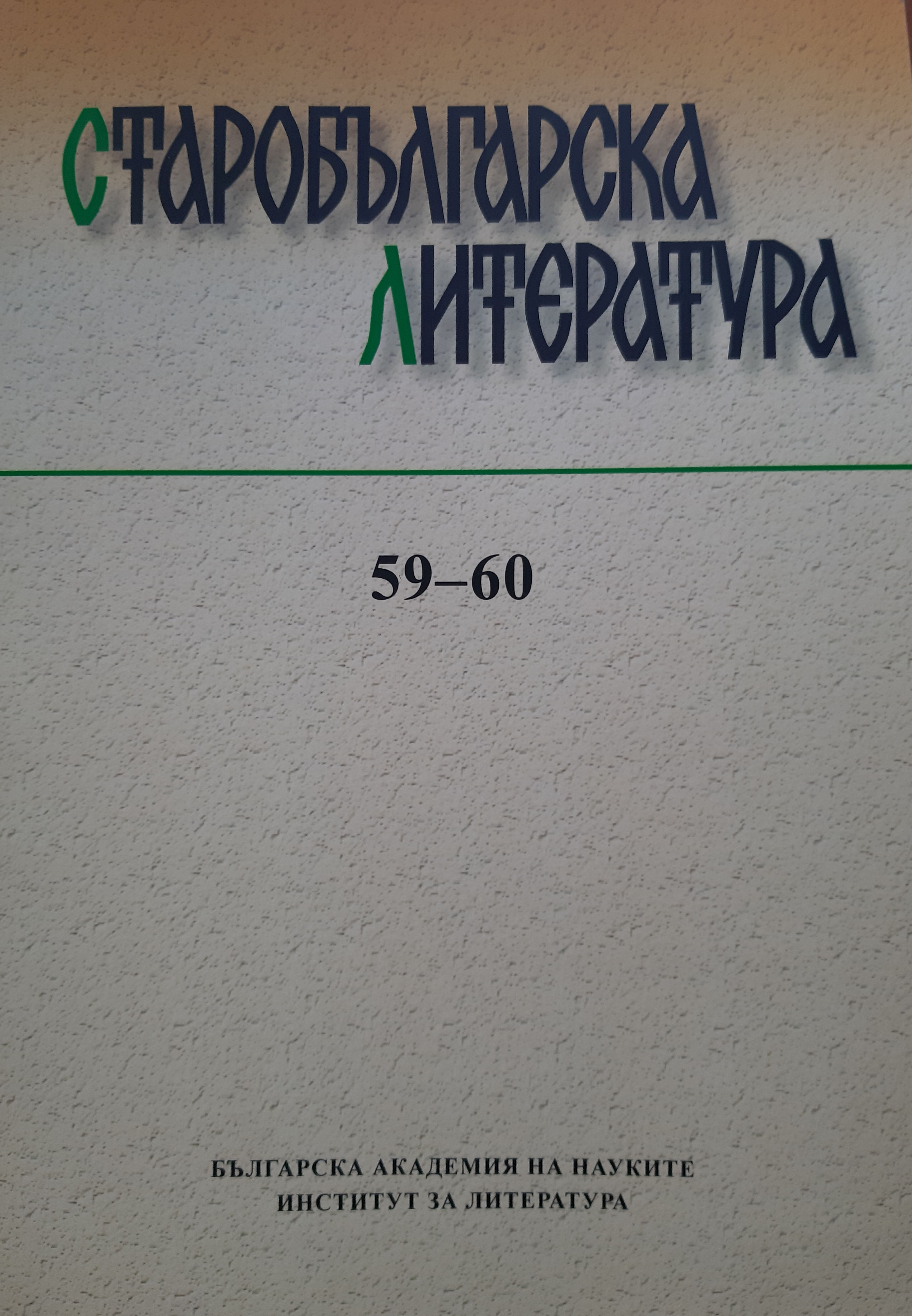
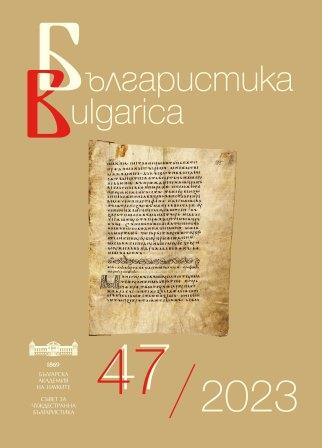
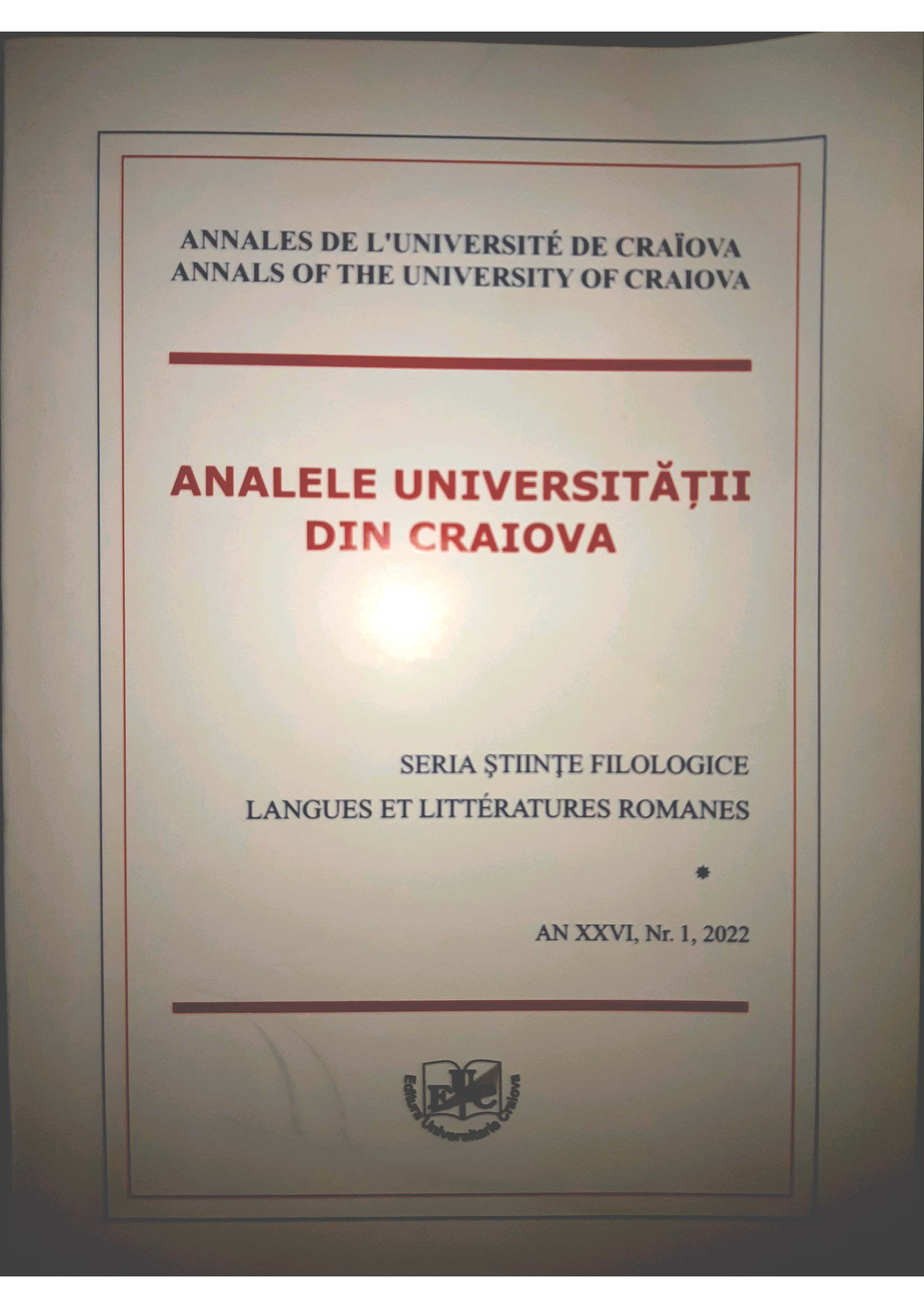
In these two texts, Zweig Stefan lucidly describes the fear that eats away people who are at fault. This feeling completely destroys the lives of the heroines. Thus, weakened, Irene and Mrs. C. are exposed to all kinds of emotion: fear, hatred, anger and madness succeed one another in their daily lives. Therefore, their confined existence, with no way out, is like an oasis. Through these writings and in a psychocritique approach, we find that fear is a stronger emotion than death. The victims of this feeling, weakened, tortured and profoundly scarred, lose all control. They live a cloistered and quiet life because of fear, and find their freedom only through speech and music.
More...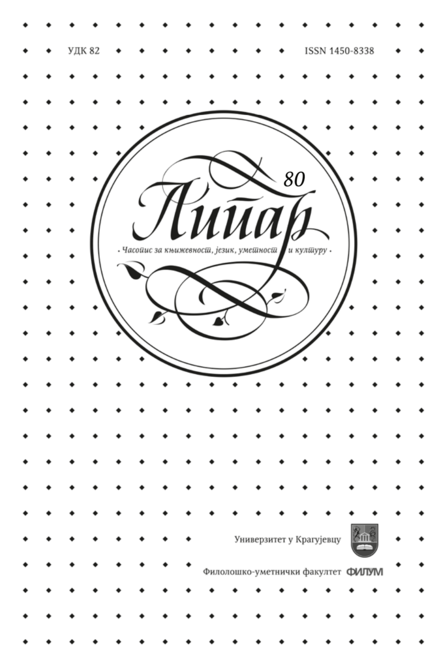
In diesem Beitrag wird versucht ein phraseodidaktisches Lehr- und Lernkonzept zur Vermitt- lung der Phraseologismen anzugeben, die die Komponente Licht / svetlo enthalten. Dabei dient die deutsche Sprache als Ausgangsprache und die serbische Sprache als Zielsprache. Dieser Beitrag soll besonders Germanistikstudenten oder Deutschlernenden auf den Niveaustufen B1 oder B2 hilfreich sein. Das Erlernen der Phraseologismen im Deutschunterricht ist nicht immer einfach, deshalb ist das Ziel dieses Beitrags den Lernenden die Phraseologismen, welche die Komponente Licht / svetlo enthalten näherzubringen. Der Beitrag ist in zwei Teile gegliedert. Aus verschiedenen Wörterbüchern wurden insgesamt 28 Phraseologismen herausgesucht und nach dem Äquivalenzgrad sortiert, um so Unterschiede und Ähnlichkeiten für den Lernenden klar darzustellen. Dieser einheitliche Überblick bildet den ersten Teil der Arbeit. Es wurde die kontrastive Methode verwendet. Der zweite Teil besteht aus den darauffolgenden Übungen, die sowohl Deutschlernenden, aber auch Deutschlehrenden von Hilfe sein können. Die ausgewählten 8 Übungen können im DaF-Unterricht Gebrauch finden, teils aber auch von den Lernenden individuell genutzt werden. Sie dienen zur Rezeption aber fördern auch die Produktion der Phraseologismen.
More...
The paper investigates the onomastic data collected in Donja Sabanta, Sumadija region, which administratively belongs to the municipality of Kragujevac. Microtoponyms and antroponyms (personal and family nicknames and hypocoristic names) of all the residents who live in the village, according to the information we possess, either permanently or from time to time (in order to do seasonal agricultural work on the land). In order to establish the dynamics of the antropomasticons from the village of Donja Sabanta we have consulted the birth register, and thus compared the system of personal first names of the people born between 1930 and 1960 and those born between 1990 and 2020. The aim of this paper is to list all the toponyms and antroponyms and analyses them from the structural and semantic aspect. The secondary aim is to describe the stability and changes in the system of official names of the residents of the village Donja Sabanta.The collected microtoponyms are motivated by the versatile natural and cultural characteristics of the physiogenous and antropgenous phenomena in the village. In the formation of the microtoponyms in Donja Sabanta we have noticed all the deriva- tive models and suffixes which function in the toponymy of (the central) Serbia. The system of male personal nicknames stands out within the system of antroponymous categories by its numerousness and versatility. Apart from -a forms, which are domi- nant in Sumadija, a significant number of male hypocoristic names ending in -o has been confirmed (Pero, Aco and similar).At the end of the paper we enclose a register in alphabetical order of microtoponyms and antroponyms which were collected in the field.
More...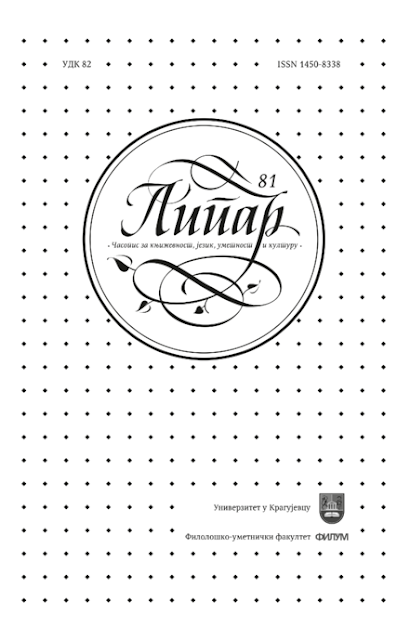
The paper presents a contrastive literature review of the grammatical and lexical aspect in English and Serbian. The motivation behind choosing this subject matter was found in the inconsistency that led scholars to class linguistic phenomena related to the grammatical and lexical features of verbs in the same category. Namely, the category of grammatical aspect was approached in different ways for a long time, various meanings were attributed to this catego- ry, and new terminology was introduced so as to describe language phenomena related to this grammatical category in a more detailed way. This resulted in the study of the lexical aspect as a subcategory of the grammatical aspect. Therefore, the primary goal of this review paper is to gain insight into the current tendencies related to the grammatical and lexical aspect, as well as to provide a systematic presentation of the approaches to the grammatical and lexical aspect in relevant English and Serbian literature and grammar books. The research revealed that the category of lexical aspect was often studied within the category of grammatical aspect due to its distinctive features stativity, dynamicity, punctuality, and durativity, which make it similar to the category of grammatical aspect. However, contemporary authors in both lan- guages make a clear distinction between these two categories, emphasizing that grammatical aspect is a grammatical and a subjective category because it is expressed by verbal inflectional morphology and periphrases and because it reflects the speaker’s viewpoint on a situation, whereas lexical aspect is expressed by the verb meaning and verbal derivational morphology, thus being considered an objective category.
More...